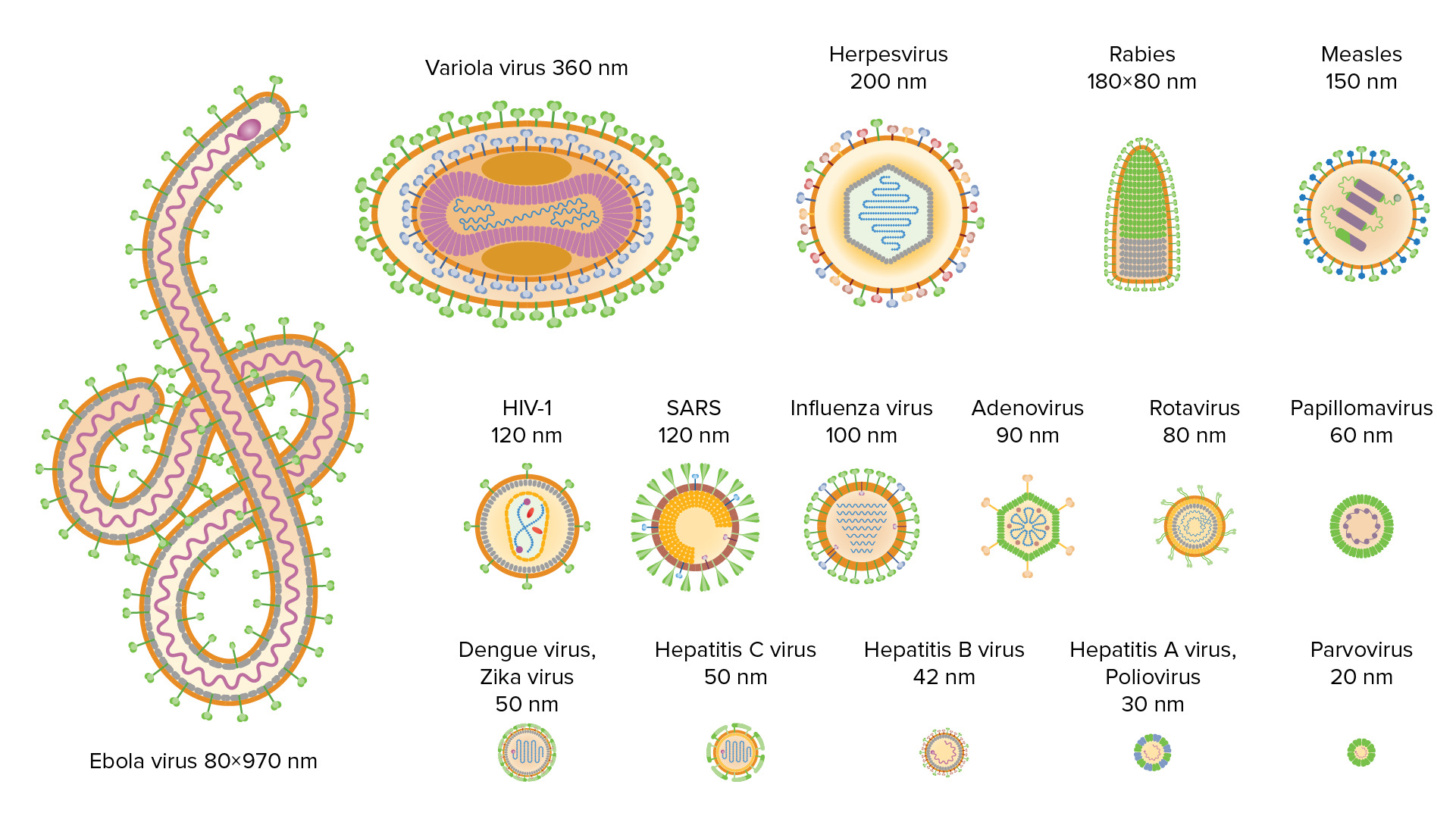Playlist
Show Playlist
Hide Playlist
Double-stranded DNA (dsDNA) Genomes – DNA Viruses
-
Slides 05 ViralGenomes MicrobiologyAdvanced.pdf
-
Download Lecture Overview
00:01 Let's start with viruses that have double-stranded DNA genomes. And I want to mention five different viruses in this category. Now the first are the adenoviruses. Now we are using here the family designation for these viruses, so adenoviruses would be Adenoviridae, families end in a viridae, and Adenoviridae are unusual looking viruses as you can see. They cause human respiratory and gastrointestinal tract infections. Then we have the Herpesviridae. These herpes viruses are in all of us. You have a herpes virus infection, you probably have many and I certainly do. We acquire these when we were young and they remain with us for our lifetimes. 00:48 The Papilloma viruses are rather small viruses. These are the agents of warts, and importantly, cervical and anal genital cancers. The polyomaviridae contains viruses that infect everyone, almost all of the human population, but they only cause disease in people who are immunosuppressed. 01:10 And finally, the Poxviridae family contains the important human pathogen smallpox virus, which was eradicated in the 1970s. It no longer exists on the planet Earth, except in two laboratories. So these viruses all have in common the fact that their genome is double- stranded DNA, and you can see that on the right-hand part of the screen here. That DNA, when it gets into a cell, directs the production of messenger RNA. We can make messenger RNA from double-stranded DNA templates only. The mRNA of course is translated by the cells protein synthesis machinery to make proteins, and those proteins go to making new virus particles. Along with this, of course, the DNA genome has to be replicated, so we see here, we’re going from one double-stranded DNA to another, that’s called DNA synthesis or DNA replication, and the newly made DNAs are then packaged into the virus particles. 02:11 So that's the overall replication screen. Now among the viruses that have a double-stranded DNA genome, there are ones with rather small genomes, for example the polyoma viruses and the papilloma viruses have genomes that are 5 and 8 thousand base pairs in length. This is really too small to encode a lot of proteins and one of the important ones that is missing is the enzyme that replicates the DNA genome, it’s called DNA polymerase. These viruses have to employ the DNA polymerase of the host cell, so their genomes are copied by host cell DNA polymerases. On the other hand there are other larger viruses in this category, including the adenoviruses; their genome is a double-stranded linear DNA molecule from 36 to 48 kb pairs in length. The herpes viruses have substantially larger DNA genomes, from 120 to 220kb pairs and then even larger are the pox viruses, between 130 and 375kb pairs. 03:19 The poxvirus DNAs is unusual, it is also a linear double-stranded molecule, but the ends are covalently connected and so if you separated the two strands of this virus DNA, it would form a single-stranded circle. All of these virus genomes are very large and they encode a viral DNA polymerase. So in terms of that function of DNA replication, they are independent of the host cell.
About the Lecture
The lecture Double-stranded DNA (dsDNA) Genomes – DNA Viruses by Vincent Racaniello, PhD is from the course Viruses.
Included Quiz Questions
Papillomaviridae have how many kbp?
- 8
- 6
- 5
- 3
- 1
What do DNA viruses employ as a template to make mRNA?
- Double-stranded DNA
- Single-stranded DNA
- Gapped DNA
- Single-stranded RNA
- DNA-RNA composite strands
Which virus family is responsible for cervical and genital cancers?
- Papillomaviridae
- Polyomaviridae
- Adenoviridae
- Herpesviridae
- Poxviridae
Customer reviews
3,0 of 5 stars
| 5 Stars |
|
1 |
| 4 Stars |
|
0 |
| 3 Stars |
|
0 |
| 2 Stars |
|
0 |
| 1 Star |
|
1 |
I like all your lectures, you give a great explanation of the material, thank you, Professor!
Not a great virus review course for Usmle step one students




